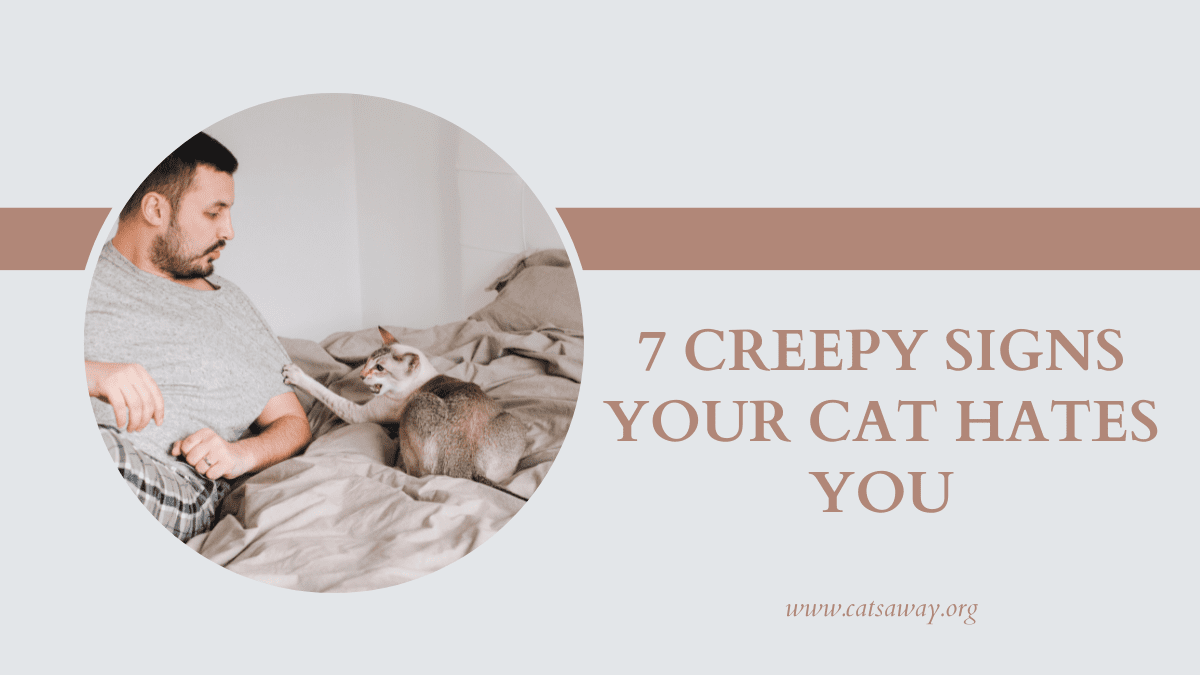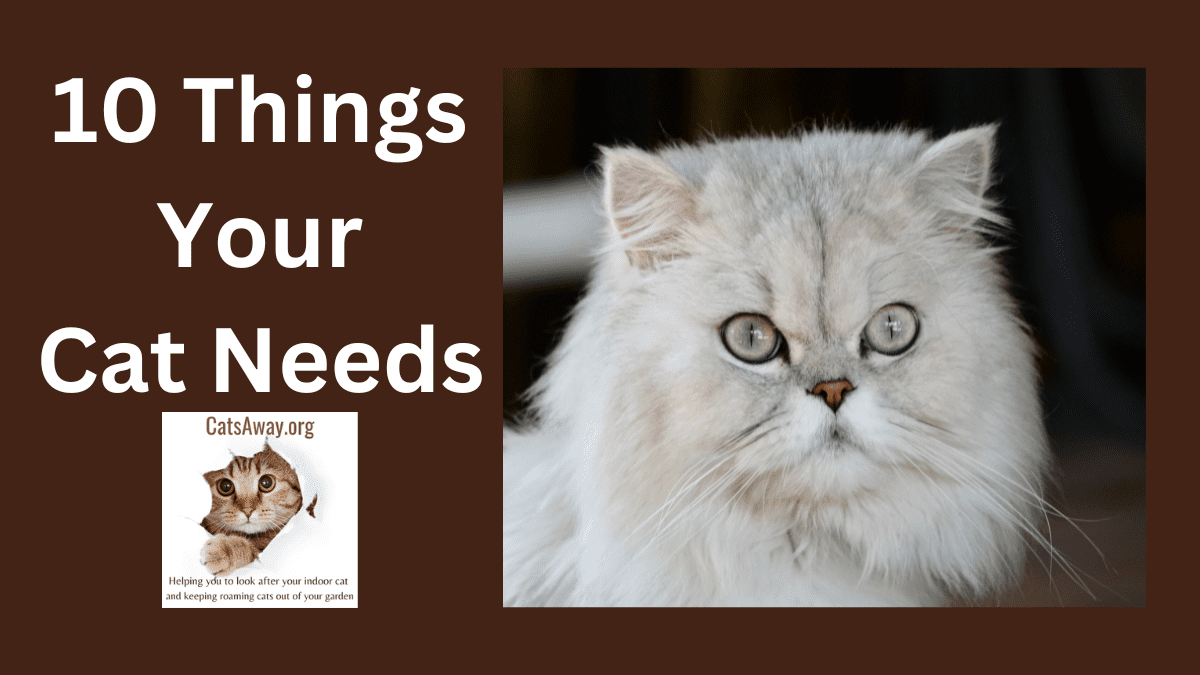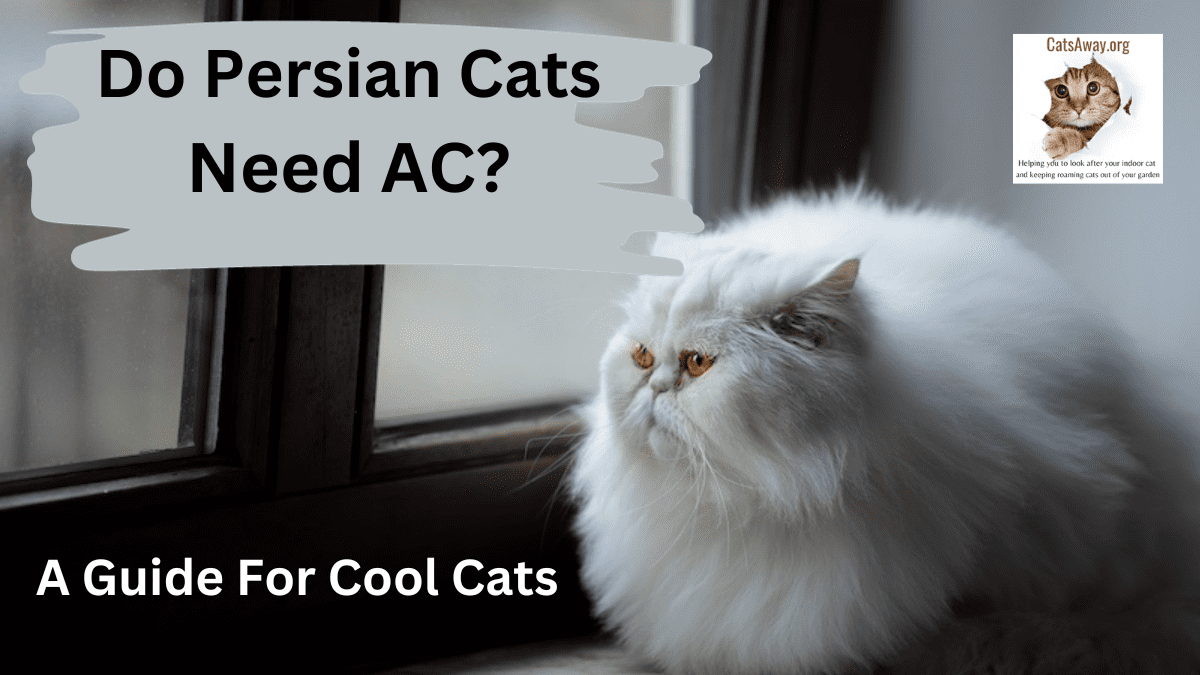The thing about introducing an indoor tree into your home is that you have to consider if it is pet safe. While this is true for both owners of cats and dogs, it is the indoor cat owner in particular that needs to choose wisely.
Dependent on the breed of your indoor cat, he may like to climb, chew on the foliage, scratch at the bark or all 3 but many household plants and indoor trees can be toxic to cats so you will want to read on as I explore my pick of 7 of the best indoor trees safe for cats.
Rubber Tree
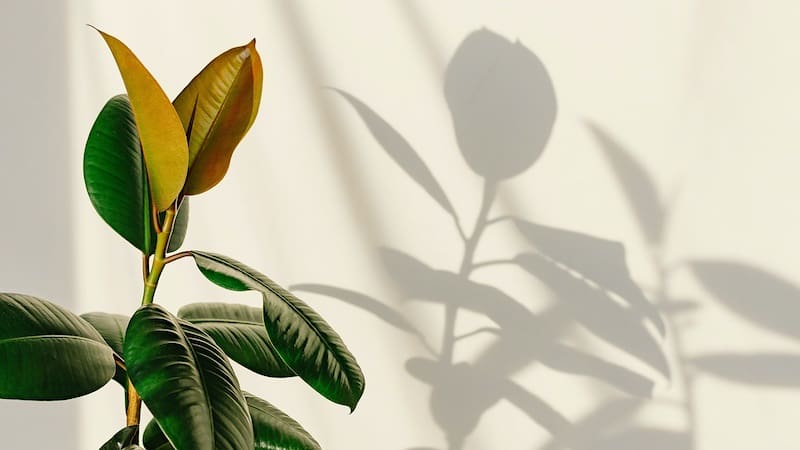
This is a popular indoor plant that can provide many benefits to cats and their owners. It is also safe for cats, making it an ideal choice for households with feline friends.
Benefits of the Rubber Tree for Cats
When grown indoors these cat safe trees offers numerous advantages to cats and their owners alike. For one, its large leaves are perfect for providing shade from direct sunlight, which helps keep your cat cool in hot weather.
Its thick foliage also provides excellent insulation against drafts or cold temperatures, helping to keep your home comfortable year-round. Additionally, the tough bark makes it difficult for cats to scratch or damage the plant when they play around it. Finally, its strong branches make great climbing posts for adventurous felines.
Caring for these indoor trees requires some special attention since this type of plant prefers warm climates and humid air conditions. To ensure proper growth and health of your indoor tree, you should place it near bright but indirect light sources such as windowsills or skylights.
Water regularly (but not too much); mist occasionally; fertilize every few months; prune away dead leaves and stems; repot annually into fresh soil; and protect from pests like mealybugs or spider mites by wiping down leaves with soapy water on occasion
While generally considered safe if ingested by pets, there are still potential dangers associated with keeping a rubber tree in your home if you have cats living there as well. In extreme cases of excessively chewing on the bark by curious kitties, latex sap may be released from the stem which can cause irritation if swallowed – although this isn’t likely unless they chew aggressively at the bark repeatedly over time without supervision (which shouldn’t happen anyway).
Additionally, some species of rubber trees contain oxalates which can cause skin irritation upon contact so take care when handling them yourself too.
All in all though this indoor tree is a great choice for cats, as it is both aesthetically pleasing and safe. With the right care, it can thrive in an indoor environment.
Recap: Rubber trees are generally safe for cats and provide many benefits, such as providing shade, insulation against drafts or cold temperatures, and climbing posts. When caring for a rubber tree indoors, ensure proper growth by placing it near bright but indirect light sources; water regularly; mist occasionally; fertilize every few months; prune away dead leaves and stems; repot annually into fresh soil; and protect from pests.
Parlor Palm
This is a low-maintenance houseplant that can provide many benefits to cats and their owners. It is an attractive, easy-to-care for plant that can be grown indoors or outdoors in warmer climates. Here are some of the benefits of this indoor tree for cats.
Benefits of the Parlor Palm for Cats
As indoor trees these can grow up to 6 feet tall and have several health benefits for cats, including helping to reduce stress levels and providing a natural air purifier by removing toxins from the air. Its leaves also contain compounds which help boost immunity and fight off infection.
Additionally, its soft fronds make it an ideal scratching post alternative as they won’t damage furniture or carpets like traditional cat scratchers do.
How to Care for a Parlor Palm in an Indoor Environment
Caring for palm indoors requires minimal effort but does require some basic knowledge about watering and light requirements. Water your plant when the top inch of soil feels dry; this will vary depending on how much sunlight your plant receives each day.
Place your plant near bright indirect light such as near a window with sheer curtains or blinds so it doesn’t get too much direct sun exposure which could burn its leaves. Fertilize every two weeks during spring and summer months with diluted liquid fertilizer at half strength to keep it healthy all year round.
Potential Dangers of the Parlor Palm For Cats
While generally safe, there are potential dangers associated with having this indoor tree around cats if not properly cared for or monitored closely enough. Make sure you don’t overwater your plants as this can cause root rot which may be toxic if ingested by curious felines.
Also watch out for any sharp edges on leaves that could scratch sensitive paws or eyes if rubbed against them while playing or exploring – trim these away immediately using scissors. Finally, always monitor playtime activities around plants as overzealous kitties may try to climb them leading to possible injury from falling branches/leaves etc.
This is a great option for an indoor cat tree, providing your feline friend with the benefits of a safe and fun environment.
Recap: The parlor palm is an ideal houseplant for cats as it provides many health benefits, is easy to care for and its soft fronds make a great scratching post alternative. However, make sure to water it properly, trim any sharp edges on leaves and monitor playtime activities around the plant to avoid potential dangers.
Ponytail Palm
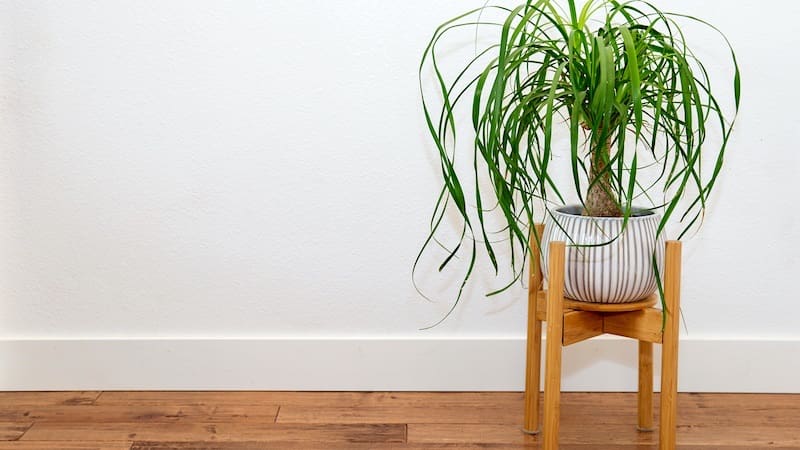
This is a unique looking houseplant that can provide many benefits to cats and their owners. It’s an easy-to-care for plant with a distinctive look, making it perfect for those who want to spruce up their home while also providing something beneficial for their pet.
Benefits of the Ponytail Palm for Cats
As indoor trees go, this one has several advantages when it comes to cats. For one, its leaves are non-toxic, so there’s no need to worry about your cat nibbling on them or getting sick from ingesting any part of the plant.
Additionally, the leaves are quite soft and pliable, which makes them great scratching posts – allowing your cat to satisfy its natural instinct without damaging furniture or other household items. Finally, it helps purify indoor air by absorbing toxins like formaldehyde and benzene – helping keep both you and your pet healthy.
How To Care For A Ponytail Palm In An Indoor Environment
Caring for this tree indoors isn’t difficult at all; however there are some things you should be aware of in order to ensure optimal health of your plant. First off, make sure you place it near a window where it will get plenty of indirect light throughout the day – this will help encourage growth as well as prevent leaf discoloration due to lack of light exposure.
Secondly, water regularly but don’t overdo it; too much moisture can cause root rot which could eventually kill off your plant if left unchecked. Lastly, fertilize every few months using an organic fertilizer specifically designed for houseplants – this will give your palm all the nutrients necessary for proper growth and development over time.
Although generally safe around cats (as long as they aren’t ingested), there are still some potential dangers associated with having a pony tail palm in close proximity with felines. Namely, they may try to climb on top of or scratch at its branches/leaves out of curiosity or boredom, which could potentially lead to injury.
Additionally, since these plants require regular watering and fertilizing, be sure not to leave any standing water lying around where curious kitties might accidentally drink from them.
This is a great option for cats that need an indoor tree to climb and explore. It’s important to understand the potential dangers of this plant, however, before introducing it into your home.
Recap: The Pony tail Palm is a great choice for cat owners looking to add an attractive, non-toxic houseplant to their home. It provides many benefits such as being a safe scratching post and air purifier, but should be cared for properly with indirect light, regular watering, and organic fertilizer. Additionally, take precautions against potential dangers like cats climbing on it or drinking from standing water.
Money Trees
Also known as Pachira aquatica, are a popular houseplant that can provide many benefits to both cats and their owners. They are are safe for cats, making them an ideal choice for pet owners who want to add some greenery to their home without worrying about the safety of their furry friends.
Benefits of Money Trees for Cats
The leaves on the money tree act as a scratching post for cats and the branches give them something to climb on or hide behind if they feel threatened. Additionally, money tree leaves contain essential oils which may have calming effects on cats when ingested or inhaled.
How To Care For a Money Tree In An Indoor Environment
Caring for a money tree is relatively easy since they require minimal maintenance and care. They should be placed in indirect sunlight near a window but not directly in front of one as this could cause the leaves to burn from too much light exposure.
Watering should be done every 7-10 days depending on how dry the soil feels; however, it’s important not to overwater because this could lead to root rot or other problems with your plant’s health. Fertilizing should only be done once every few months using liquid fertilizer diluted at half strength so you don’t overfeed your plant.
Money Trees are an ideal indoor tree for cats as they provide a safe and healthy environment with minimal potential dangers.
Recap: Money trees are a safe and easy to care for houseplant that can provide many benefits to cats. They require indirect sunlight, watering every 7-10 days, and fertilizing once every few months with diluted liquid fertilizer.
Norfolk Island Pines
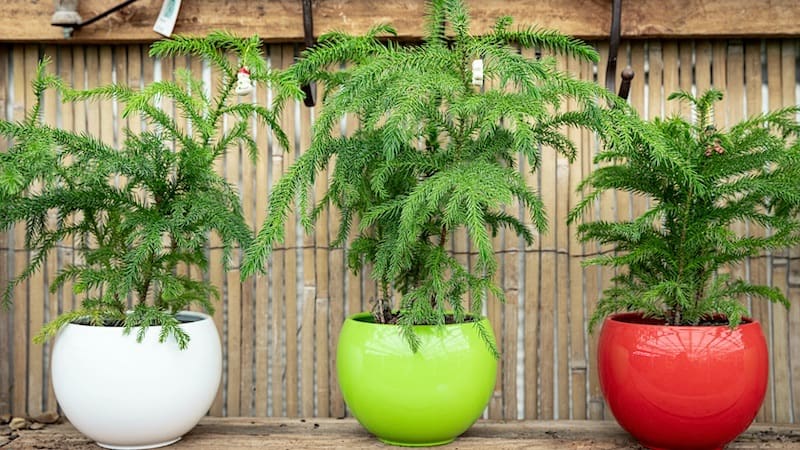
Benefits of the Norfolk Island Pine for Cats
The Norfolk Island pine is a great choice for indoor cat owners looking to add some greenery to their home. These unique plants have long, slender branches and soft needles that cats love to rub against. Not only do they provide visual interest in the home, but they also help purify the air by removing toxins from it. Additionally, these trees can help reduce stress levels in cats as well as humans since they’re known to be calming and relaxing plants.
How to Care for a Norfolk Island Pine in an Indoor Environment
Caring for this tree indoors is relatively easy compared to other houseplants. They prefer bright indirect light and should be watered when the top inch of soil feels dry. It’s important not to overwater them or let them sit in water because this can cause root rot which can kill the plant over time. Fertilizing once every two months during spring and summer will keep your tree healthy and happy all year round.
Potential Dangers of the Norfolk Island Pine for Cats
Although these trees are generally safe for cats, there are some potential dangers associated with them that pet owners should be aware of before bringing one into their home. The most common danger is ingestion; if ingested, the needles could cause gastrointestinal irritation or blockage so it’s best to keep curious kitties away from these plants whenever possible.
Additionally, although rare, some cats may experience skin irritation after coming into contact with certain types of pine needles so it’s always wise to monitor your pet closely when introducing any new plant into their environment just in case.
The Norfolk Island Pine provides cats with a safe and fun environment to explore, but it’s important to ensure they are kept in an indoor environment that is properly maintained. Next, we’ll look at the benefits of Weeping Figs for cats.
Recap: Norfolk Island pines are a great choice for cat owners looking to add greenery and air purification to their home. They require bright indirect light, regular watering when the top inch of soil feels dry, and fertilizing once every two months during spring and summer. However, cats should be monitored closely as ingestion of needles can cause gastrointestinal irritation or blockage, while some cats may experience skin irritation after contact with certain types of pine needles.
Weeping Fig

Weeping figs are a popular houseplant that can provide many benefits to cats and their owners. They are safe for cats, making them an ideal choice for those who want to keep indoor plants in the home.
Benefits of Weeping Figs For Cats
Weeping figs have many benefits for cats, including providing a natural source of shade and shelter from the sun’s rays. The leaves also act as a natural air purifier, helping to remove toxins from the air while adding oxygen back into it. Additionally, weeping figs can help reduce stress levels in cats by providing them with something soft and comfortable to rub against or climb on.
How To Care For Weeping Figs In An Indoor Environment:
Caring for weeping figs is relatively easy; they require minimal maintenance but do need regular watering and occasional pruning if needed. When selecting a location for your plant, make sure it gets plenty of indirect sunlight throughout the day as this will help promote healthy growth. It’s also important to fertilize your plant every few months using an all-purpose fertilizer specifically designed for houseplants like weeping figs so that it receives all the nutrients it needs to thrive indoors.
Weeping Figs are a great choice for an indoor cat tree due to their low-maintenance and attractive foliage. However, it is important to be aware of the potential dangers associated with them as well.
Recap: Weeping figs are a safe and beneficial houseplant for cats. They provide shade, air purification, stress relief, and require minimal maintenance – just regular watering and occasional pruning or fertilizing.
Banana Tree
The banana tree is a unique looking houseplant that can provide many benefits to cats and their owners. It’s an ideal plant for those who want to keep indoor cats safe from potential toxins, as it is non-toxic and won’t cause any harm if ingested. The leaves of the banana tree are also soft and fuzzy, making them perfect for cats to lounge on or scratch against.
Benefits Of The Banana Tree For Cats
Not only does the banana tree look great in your home, but it also provides plenty of benefits for your cat. Its leaves are soft enough for cats to lounge on without damaging them, while its trunk makes a great scratching post. Additionally, the leaves contain natural oils which can help reduce stress levels in felines when they rub up against them or chew on them – making this plant a great choice for anxious kitties.
How To Care For A Banana Tree In An Indoor Environment
Caring for a banana tree indoors isn’t too difficult; however there are some things you should be aware of before bringing one into your home. Firstly, make sure you have enough space available – these plants can grow quite large over time so having ample room will ensure it doesn’t become overcrowded or unruly.
Secondly, try not to overwater the plant as this could lead to root rot or other issues down the line. Lastly, place it near bright indirect sunlight such as next to a window with curtains drawn during daylight hours – this will help keep its vibrant green colouring intact.
While generally considered safe around pets due to its non-toxicity levels, there are still some potential dangers associated with keeping banana trees indoors with cats present. Firstly, if eaten in large quantities by curious felines then gastrointestinal problems may occur due to its high fibre content which could lead to vomiting and diarrhoea amongst other symptoms.
Always monitor how much your cat eats from these plants. Secondly, sharp edges along branches may pose an injury risk if scratched against too hard – so trim off any jagged pieces regularly just in case.
Recap: Banana trees are a great choice for indoor cats as they provide many benefits such as being non-toxic, providing a soft surface to lounge on and helping reduce stress levels. However, it’s important to make sure the plant has enough space and is not overwatered or placed in direct sunlight. Additionally, keep an eye out for any sharp edges that may pose an injury risk if scratched against too hard.
FAQ
What indoor trees are okay for cats?
When selecting trees for an indoor cat to climb on and use as a scratching post, it is important to choose species that are non-toxic and safe. Cat-friendly options include Ficus benjamina (Weeping Fig), Dracaena marginata (Dragon Tree), and Chamaedorea elegans (Parlor Palm). These trees have no known toxicity when ingested by cats and can provide a great source of enrichment in the home.
Additionally, they are all low maintenance plants which makes them ideal for busy pet owners. When introducing any new houseplant into your home, make sure to research its safety beforehand as some varieties may be toxic or irritating to cats if ingested.
How do I choose outdoor trees safe for cats?

When it comes to choosing trees for your garden, safety should be the top priority. Cat-friendly trees include fruit trees such as apple and pear, as well as evergreens like cedar and pine. Avoid any tree with sharp thorns or needles that could injure your cat if they brush against them. Also, make sure the branches are strong enough to support a curious kitty’s weight.
Finally, avoid planting toxic plants near your chosen tree; some common poisonous plants include oleander, lilies and azaleas. With these tips in mind you can choose a safe tree for your feline friend.
What trees are not toxic to cats?
The best trees to keep around cats are non-toxic varieties such as apple, cherry, fig, and pear. Other safe choices include cedar, cypress, juniper, pine and spruce. Avoid trees that produce fruits or nuts that may be toxic to cats such as avocado and walnut.
Additionally, steer clear of plants with sharp leaves or thorns like roses which can cause injury if a cat brushes against them. Finally make sure the tree is well secured in its pot so it doesn’t tip over if your cat decides to climb it.
Are large houseplants safe for cats?
There are a variety of tall houseplants that are safe for cats, such as spider plants, pothos, peace lilies and snake plants. These plants have non-toxic leaves and stems which make them safe to keep around cats.
However, it is important to note that some cats may still try to nibble on the leaves or stems so it is best to keep an eye on your pet if you decide to bring these types of plants into your home.
Additionally, some other popular houseplants like philodendrons and aloe vera can be toxic when ingested by cats so it is important to do research before bringing any new plant into your home.
Conclusion
Indoor cats can enjoy the beauty of trees without you having to worry about their safety. The above 7 are my personal favorites but there are many types of large house plants and indoor trees safe for cats and dogs that I haven’t covered such as the umbrella plant, spider plant, air plants, prayer plant, polka dot plant, fiddle leaf fig, snake plant, lemon tree and all the other citrus trees.
With careful research and consideration you can find an indoor tree that is both beautiful and safe for your cat. Remember though to always keep a close eye on your cat when introduce a new type of indoor tree or house plant in order to ensure their safety at all times.



